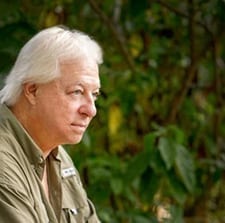From Rose Hill To Brattonsville, Part II
April 11, 2019
By Tom Poland
Journey Through Time and Space
In Part I Park Manager Nate Johnson led us through Rose Hill Plantation State Historic Site. In Part II, we visit Historic Brattonsville. With a bit of tailwind, it takes about 54 minutes to drive from Rose Hill to Historic Brattonsville. Not quite 42 miles, the route takes us northeast to Highway 49 through Union, Monarch Mill—by John B. Long Lake—Lockhart, McConnells, and a circuitous route over and around Draper Wildlife Management Area into Historic Brattonsville. Sara Johnson knows this journey well. She drives it five days a week. If you think she’s related to Nate Johnson, you’re close. In 2006, she and Nate worked at the Aiken Rhett House Museum in Charleston. Today they’re married and interpreters and managers of historic sites. For Sara, it’s Historic Brattonsville.
Historic Brattonsville
You won’t find barbed wire or metal post fences on the farm in Historic Brattonsville in York County. You’ll find no anachronisms here. You will find split rail fences in this place where you can step back in time at an 800-acre historical site, one of South Carolina’s most important cultural attractions, part of the York Culture & Heritage Museum.
At the property’s heart is the Brattonsville Historic District (National Register of Historic Places). It features fourteen original buildings dating from the 1760s to the 1880s. The buildings and cultural landscape reflect four generations of Brattons and the people who lived around them.
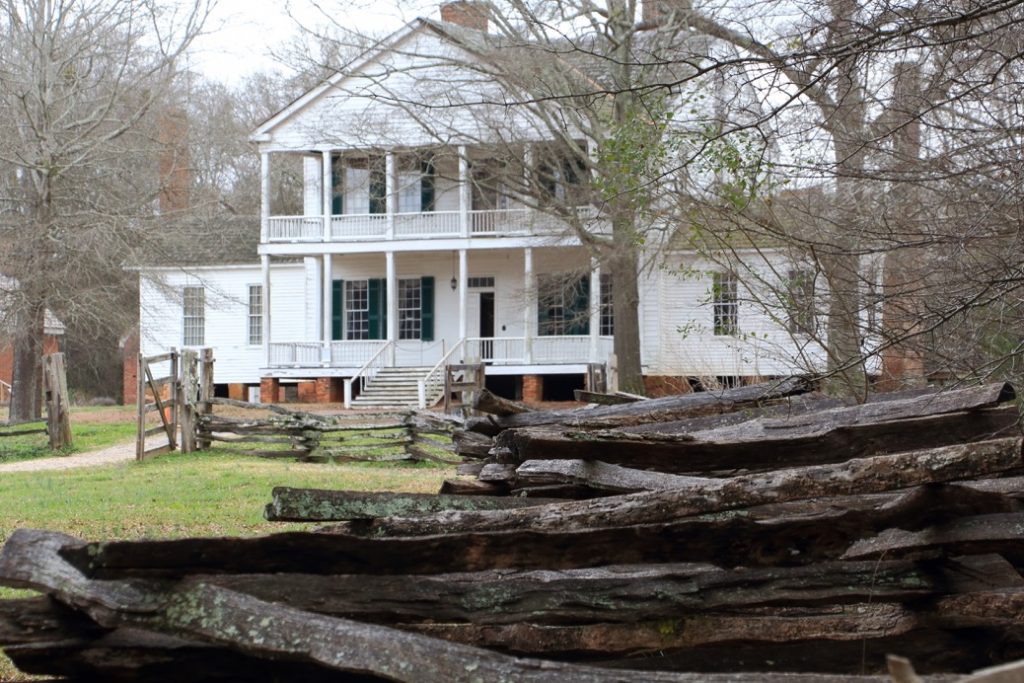
A split-rail fence fronts the Homestead, ca. 1828. Restoration of the Homestead began in 1975. A year later it was opened to the public.
.
Sara Johnson works at Brattonsville as the Preservation/Restoration Specialist. It’s a good fit. “I decided when I was 11 that I wanted to be a ‘historic preservationist.’ ” When Sara was in the sixth grade she had to choose a cause to write a persuasive paper for, and she chose to write about the need to preserve old buildings. “I’ve always had a love for old buildings and a particular interest in historic building materials, so I chose to go into architectural conservation where I would be able to work hands-on on historic buildings.”
Well, I’ll say here that Sara loves her work at Brattonsville. She works with Property Manager Joe Mester to oversee the preservation of more than 35 buildings, including original historic structures, historic buildings moved to the site in the 1970s and 80s, as well as reconstructed buildings.
“A lot of what I do is hands-on preservation; work that we do in-house with our preservation team and summer interns to maintain our buildings,” said Sara. As an example, she mentions “restoration done on the two original slave buildings including repointing and rebuilding of brickwork.” Sara also performs condition assessments and prepares scopes of work for preservation of Brattonsville’s buildings as well as other historic buildings owned by York Culture & Heritage Museums. She works with architects, engineers, and contractors hired for larger projects like the upcoming restoration of the Brick House.
Dr. John S. Bratton built the Brick House, circa 1843, but died right before its completion. A planter and doctor, Bratton was also a merchant. The Brick House, a combined residential and commercial space, housed the Bratton’s mercantile store, post office, and living space on the first floor. At some point, probably during the 1850s, a wooden frame was added on the back, a bit of a mystery. Why and when was it built?
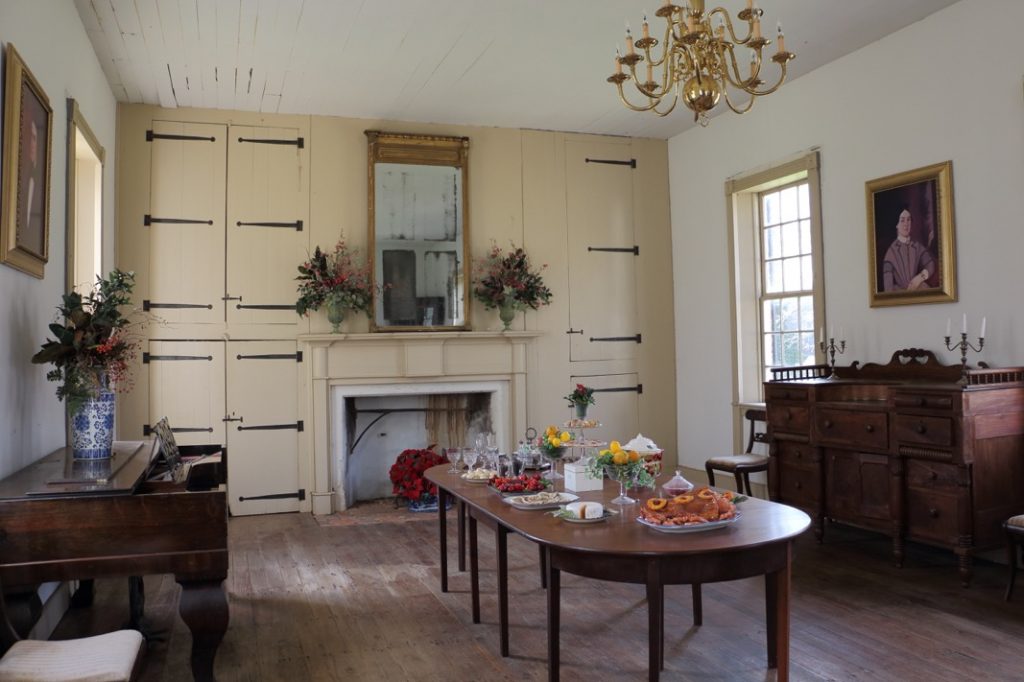
This large, detached dining room, known as Assembly Hall, was built as an addition to the Homestead shortly after its construction.
.
Let Sara take you back in time as she recounts detailed store records from 1843 to 1847. “Cloth, mostly imported fabrics but also homespun, was the most frequent item purchased. Customers also bought tobacco, pens, paper, soap, spectacles, boards, sugar, 1 lott chinaware, 4 Breakfast Plates, nails, razors, straw hats and bands, buttons, butt hinges, looking glasses, snuff, coffee, teakettles, books (including a catechism and an arithmetic book), kidd slippers, tin buckets, Epsom salts, chamber muggs [sic], pocket knives, saddle blankets, twine & bagging (for cotton) and cologne.”
You get insight into the people’s needs in the 1860s and 1870s as well. From the accounts John S. Bratton, Jr. preserved, it appears that staples (such as molasses, lard, etc.) needed by the recently freed men and women who kept working for the Brattons provided partial payment for work.”
Want more insight into life back then? Records from 1866 list the following items for sale: flax, children’s shoes, soda, paper, a coffee pot; a seine, tobacco, a comb, a hair brush, kerosene; a wash basin, raisins, a soup ladle, a tin pan, a hoop; a water dipper, a boy’s hat, lady’s gloves, soda crackers, candy; mustard, hams, children’s stockings, needles, thread; a handkerchief, a cravat, cheese, mackerel, hose; calico, laudanum, a spelling book, a padlock, bitters, a carpet broom; ginger, cologne, a lamp & wicks, a whetstone, a fine comb; matches, lemonade, a straw hat & band, and a “shaker bonnet.”
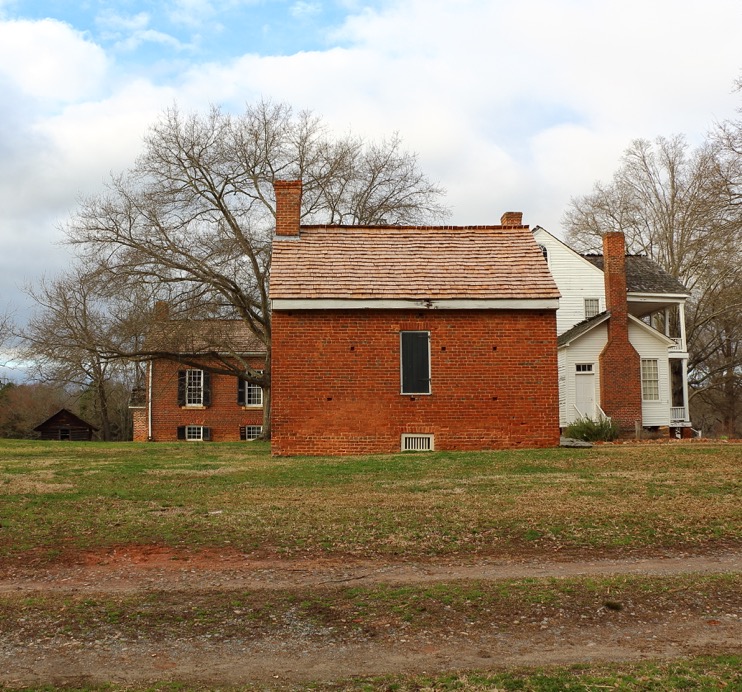
This building may have served as a dairy as well as housing for enslaved people. It is one of two original slave buildings that remain.
.
In 1885, the Bratton Store moved from the Brick House into a new, freestanding adjacent building built specifically for this purpose. At that time, the Brick House was modified to make it completely residential. New partition walls went up on the first floor and the two doors that provided separate access to the store and private space were bricked in, moving the entrance to the center. The Bratton Store operated out of the freestanding store structure until 1915 when it closed and the last of the Brattons moved from Brattonsville. The building burned in 2004. Only the stone piers and central chimney remain.
In the 1820s most slave cabins were built from logs, John Bratton, however, used brick, a unique departure from typical slave cabin construction. Some thirty years would pass before other plantations built brick slave dwellings. While time eradicated most log slave cabins Brattonsville’s slave cabins endure. No one knows why Dr. John Simpson Bratton built brick cabins in the first place.
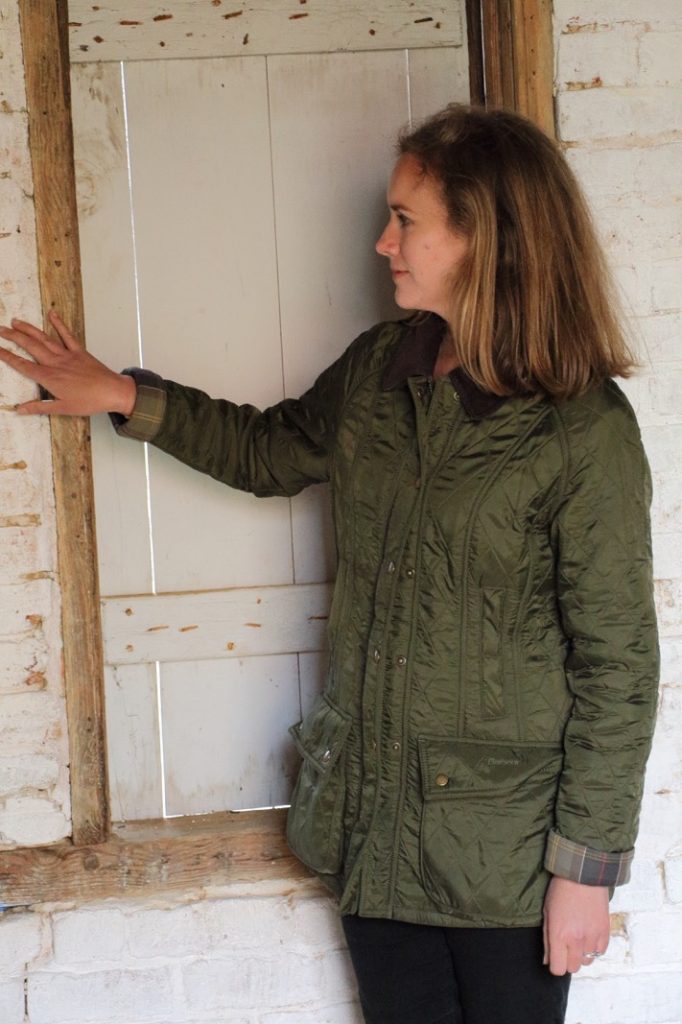 Among Brattonsville’s twenty-nine structures stands an old corncrib too. You’ll see much here. See the faux grain door, painted for The Patriot. See the extraordinary brick slave cabins. Step into the old smokehouse and inhale fragrances of woodsmoke and salt. See its salted meat.
Among Brattonsville’s twenty-nine structures stands an old corncrib too. You’ll see much here. See the faux grain door, painted for The Patriot. See the extraordinary brick slave cabins. Step into the old smokehouse and inhale fragrances of woodsmoke and salt. See its salted meat.
Photo: Preservationist Sara Johnson points out fingerprints in handmade bricks in an original slave house interior.
Great plans are in store for the Brick House. “We are in contract negotiations with a general contractor to undertake the restoration of the building so that it can be opened as a museum space,” said Sara. “Only the first floor of the Brick House will be restored to its appearance from the 1850s through the 1880s. The rest of the building will be stabilized.”
Restoration will include removing partition walls built after the store was moved to the 1885 building, restoring the original configuration of doors and windows related to the store entrance, building custom store cabinetry and paneled counters based on photographs of the originals. A hatch that once led from the store space into the full-height cellar (possibly used for storage of goods) will also be restored.
The store will carry things it would have in the late 1800s, based on receipts and records showing goods sold there. The historic paint colors, based on paint analysis, will be restored throughout the first floor and exterior of the building. A vintage look and feel will only get better.
Brattonsville’s vintage appearance isn’t lost on Revolutionary War re-enactors who stage The Battle of Huck’s Defeat, a Revolutionary War rallying point that eventually led to the King’s Mountain victory. At his own home, William Bratton ambushed Captain Christian Huck and 130 Loyalist cavalry belonging to British Lieutenant Colonel Banastre Tarleton’s legion, a dominating defeat.
So, history lives on at Historic Brattonsville. And what might Sara want you to know? “I’d like people to know there will be a lot of exciting changes at Historic Brattonsville in the near future. We’ll open up the Brick House to interpret a part of the Brattonsville history that has not been a major part of the site’s interpretation until now. The Brick House tells the story of the mercantile/commercial side of the Brattonsville community and can better represent the period following the Civil War when the store/post office ran out of the Brick House would have served other farming families nearby as well as the community of tenant farmers that worked for the Brattons during and after Reconstruction.”
Historic Brattonsville. Step back in time with Sara.
Journey through time and space. Visit the websites for details on planning a trip.
Historic Brattonsville, http://chmuseums.org/brattonsville/
803.628.6553
1444 Brattonsville Rd.
McConnells, SC 29726
Visit Tom Poland’s website at www.tompoland.net
Email Tom about most anything. [email protected]
Tom’s work appears in publications throughout the South. His books include South Carolina Country Roads, Classic Carolina Road Trips From Columbia, Georgialina, A Southland, As We Knew It, and Reflections of South Carolina, Vol. II. He writes about the South, its people, traditions, lifestyle, and culture. He’s member of the SC Humanities Speaker’s Bureau. Governor Henry McMaster conferred the Order of the Palmetto upon Tom for his body of work on South Carolina. Tom grew up in Lincoln County, Georgia, and graduated from the University of Georgia. He lives in Irmo, South Carolina.




